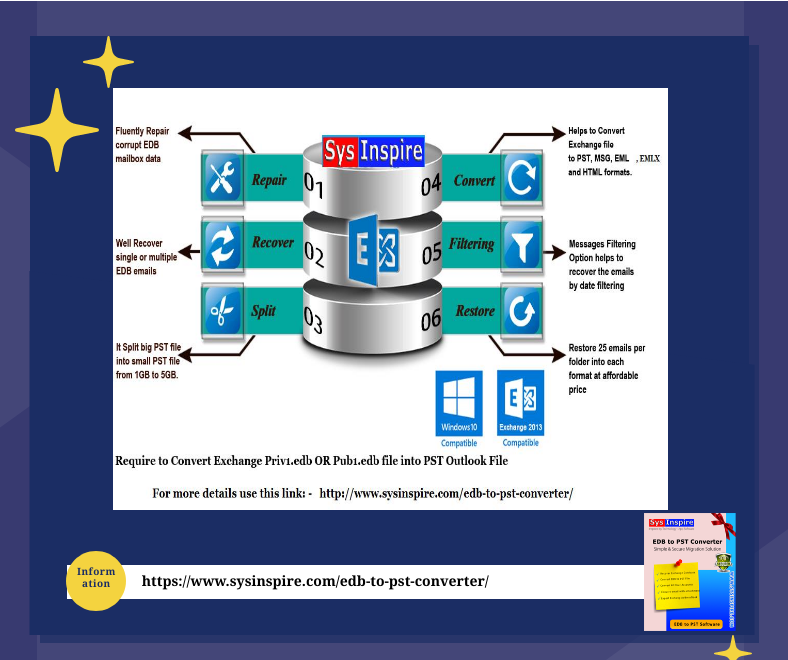How to convert edb to pst
|
First, install the SynsInspire EDB to PST Converter.
Click on the Add EDB button. Select the EDB files that have to be converted. Now select the option “Export multiple mailboxes to Outlook PST”. Fill the details to filter based on message class and process item date, click the Next. A wizard will come with the options Export on Existing PST, Export and create New PST File and option to Split PST file size, choose the option as per the need. And when this process completes, the user can save the file for future references. More info:- https://www.sysinspire.com/edb-to-pst-converter/  |
|
Converting EDB (Exchange Database) files to PST (Personal Storage Table) manually can be a complex process, but it can be done using the Exchange Management Shell (EMS) or other methods. Here's a basic overview of how to manually convert EDB to PST using EMS. Please note that this process typically requires administrative access to the Exchange server.
Important: Make sure you have a backup of your EDB file before proceeding, as this process can be irreversible, and it's essential to protect your data. Open Exchange Management Shell: Log in to the server where your Exchange database (EDB file) is located. Navigate to the Mailbox Database Folder: Use the cd command to navigate to the folder containing your EDB file. For example: bash Copy code cd "C:\Program Files\Microsoft\Exchange Server\V15\Mailbox\Mailbox Database" Create a New Folder for PST Export: Create a directory where you want to store the PST files that will be exported from the EDB. For example: mathematica Copy code New-Item -ItemType Directory -Path "C:\PSTExport" Use the New-MailboxExportRequest cmdlet: Use the New-MailboxExportRequest cmdlet to export mailbox data from the EDB file to a PST file. You'll need to specify the mailbox you want to export and the target path where the PST file will be saved. Here's an example: arduino Copy code New-MailboxExportRequest -Mailbox username -FilePath "\\ServerName\C$\PSTExport\username.pst" Replace "username" with the actual mailbox name or alias, and "\ServerName\C$\PSTExport" with the path to the directory you created in step 3. Check the Export Status: You can check the status of the export request using the Get-MailboxExportRequest cmdlet: mathematica Copy code Get-MailboxExportRequest | Get-MailboxExportRequestStatistics Complete the Export Request: Once the export is complete, you can use the Complete-MailboxExportRequest cmdlet to finalize the process: bash Copy code Get-MailboxExportRequest | where {$_.status -eq "Completed"} | Complete-MailboxExportRequest Access the PST File: The PST file will be saved in the directory you specified in step 4. You can then copy or move it to the desired location. Please note that this process exports individual mailboxes. If you want to export the entire database, you may need to repeat these steps for each mailbox in the database. Keep in mind that manual EDB to PST conversion can be a complex and time-consuming process. Additionally, it's important to have the necessary permissions and administrative access to perform these tasks on your Exchange server. If you are not comfortable with these steps or have concerns about data integrity, consider using third-party EDB to PST conversion tools or consulting with an Exchange administrator for assistance. |
«
Return to OFBiz
|
1 view|%1 views
| Free forum by Nabble | Edit this page |

